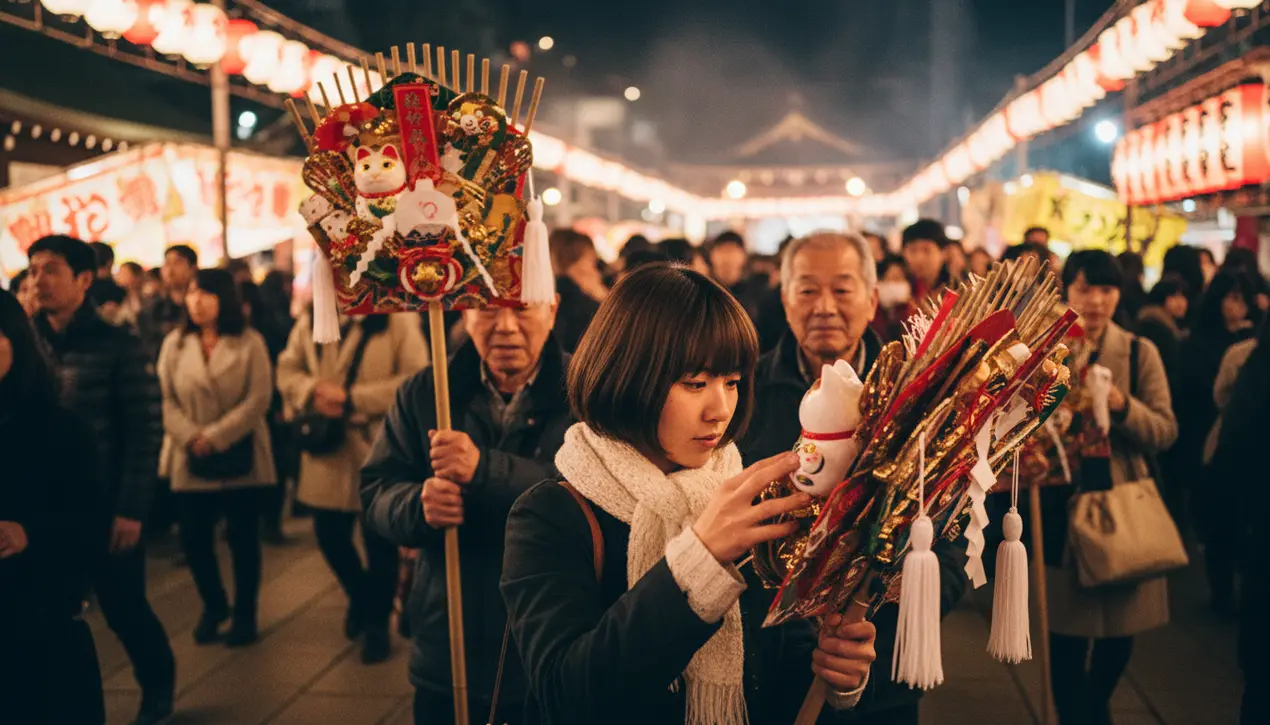
Entertainmentculture & trends
Annual Tori-no-ichi festival draws crowds to Tokyo shrine.
LA
Laura Bennett
1 day ago7 min read7 comments
The air at Tokyo’s Ootori Shrine on Monday carried that particular crispness that seems to arrive only with late autumn, a chill sharpened by the scent of roasting sweet potatoes and the low, resonant hum of a thousand simultaneous prayers. This was the Tori-no-ichi festival, the 'Day of the Rooster,' and the crowds that flowed through the torii gate were not merely spectators; they were participants in a centuries-old ritual of hope, their collective focus fixed on the ornate kumade rakes believed to claw prosperity and good fortune into one's life.I found myself standing beside an elderly couple, Mr. and Mrs.Tanaka, who have made this pilgrimage for forty-seven consecutive years. Their story, like the festival itself, is one of layered meaning.'The first one we bought was small, just a simple bamboo rake,' Mrs. Tanaka told me, her eyes crinkling at the corners as she gestured to the magnificent, multi-tiered kumade they were carefully selecting this time, adorned with symbolic masks, a miniature Daruma doll, and a shide streamer.'Our business was just a small stall then. Each year, as we traded in the old rake for a larger one, our family and our shop grew.It’s not magic,' her husband interjected, pragmatic yet reverent. 'It is a reminder.It sits in our shop all year, and when you look at it, you remember the effort you promised to put in, the community you are part of. The rake doesn’t gather the luck for you; it reminds you to rake it in yourself.' This human-centric view of the ritual reveals its true engine. The kumade, often misunderstood by outsiders as a simple good luck charm, functions more as a tangible contract with one's own ambition.The act of 'trade-up,' or *nobori*, where last year's rake is returned to the shrine to be ceremonially burned and a new, more elaborate one is purchased, is a physical manifestation of growth, a yearly audit of one's aspirations. The atmosphere is less that of a casual street fair and more of a bustling, open-air stock exchange for fortune, with vendors, known as *teikiya*, using rhythmic, almost musical calls to hawk their wares, their voices a stark contrast to the quiet negotiations happening at each stall.A young entrepreneur I spoke with, a tech startup founder named Kenji, saw a parallel to modern agile development. 'It’s like a sprint retrospective,' he said with a laugh.'You look at last year's 'product'—your life, your work—you see what worked, you ceremonially burn the failures, and you commit to a bigger, better version for the next cycle. It’s iterative prosperity.' This seamless blending of Shinto tradition with contemporary ambition is what makes Tori-no-ichi so resilient. In a city hurtling towards the future at breakneck speed, this annual pause offers a profound psychological anchor.It connects the salaryman to the shopkeeper of the Edo period, both united by a fundamental human desire to cultivate a better tomorrow. The festival, therefore, is not just about buying an ornament; it is a communal narrative of resilience, a story told not in words but in the careful selection of a talisman, a story that, for the Tanakas, Kenji, and thousands of others, is perpetually being written, one rake at a time.
#Tokyo
#Tori-no-ichi
#festival
#Ootori Shrine
#kumade
#tradition
#prosperity
#featured
Stay Informed. Act Smarter.
Get weekly highlights, major headlines, and expert insights — then put your knowledge to work in our live prediction markets.
Comments
Loading comments...
© 2025 Outpoll Service LTD. All rights reserved.